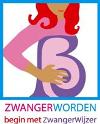ZwangerWijzer expanded with risks at work
 Working conditions can sometimes reduce fertility or be harmful to pregnancy and the unborn child. From 3 November, people with a desire to have children can easily check whether they are exposed to any conditions at work that may interfere with a healthy pregnancy. This can be done using the preconception indicator at www.zwangerwijzer.nl (dutch site).
Working conditions can sometimes reduce fertility or be harmful to pregnancy and the unborn child. From 3 November, people with a desire to have children can easily check whether they are exposed to any conditions at work that may interfere with a healthy pregnancy. This can be done using the preconception indicator at www.zwangerwijzer.nl (dutch site).
This online self-test for people with a desire to have children has been expanded to include questions about work. Therefore, an important group of risks will now be included in the total assessment of preconception risk factors. The module is an initiative of Erfocentrum, Erasmus Medical Center and the Netherlands Centre for Occupational Diseases (NCvB).
More attention for risks at work
Most people of childbearing age work. However, work is one of the most underexposed elements in preconception care. This also applied to ZwangerWijzer. Until now, the online self-test for people with a desire to have children focused mainly on lifestyle factors and risks arising from prospective parents’ medical and obstetric history. Nevertheless, a number of working conditions are known to reduce fertility or be harmful to pregnancy and the unborn child.
Module content
The module consists of six questions about the working conditions of both partners. These questions concern working with chemicals, physically demanding work, irregular working hours, stress, risk of infection and the influence of physical factors such as noise. If a risk factor applies, the module provides information on the risks and recommendations on preventive measures that can be taken at work, often before the pregnancy. The information is based on the 2007 Netherlands Society of Occupational Medicine (NVAB) guideline for occupational physicians ‘Pregnancy, post-partum period and work’.
Key role for occupational physician
In the event of risk factors at work, the occupational physician is the first designated person to inform employees with a desire to have children on the risks and any precautions they can take. This key role for the occupational physician in work-related risk factors is emphasised in ZwangerWijzer. The module also refers people to midwives, obstetricians, general practitioners and gynaecologists. Nevertheless, in certain cases the expertise of an occupational physician will be needed to properly assess the risks and provide suitable advice.
Employer and employee
Employees’ own responsibility is also addressed in the module, for example in the form of specific tips on safe handling of hazardous materials. The employer’s obligations are also mentioned. As is known, employers are legally obliged to eliminate as many dangers to an unborn child as possible, and to modify the work or provide alternative work if necessary.
| "Professionals or employees who have questions on this subject can contact us by e-mail at t.brand@amc.uva.nl or by calling our secretarial department on +31 (0)20-5665387." |
